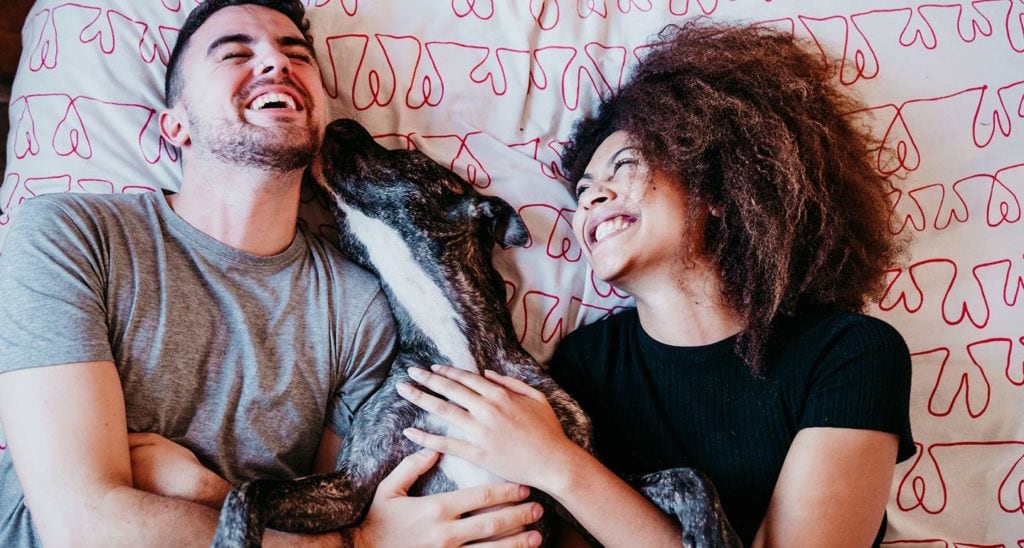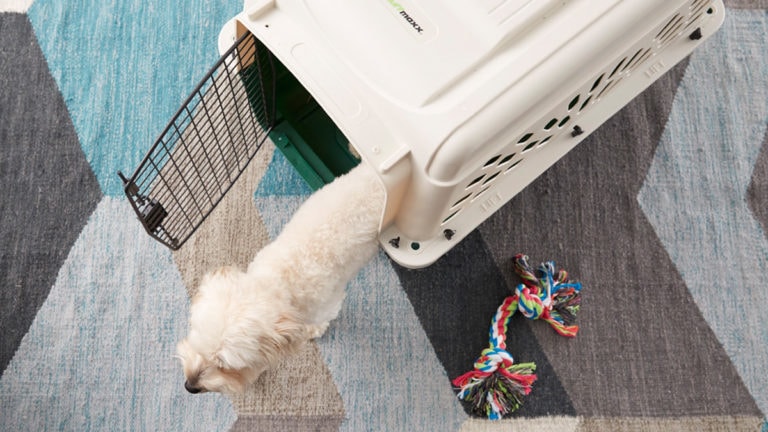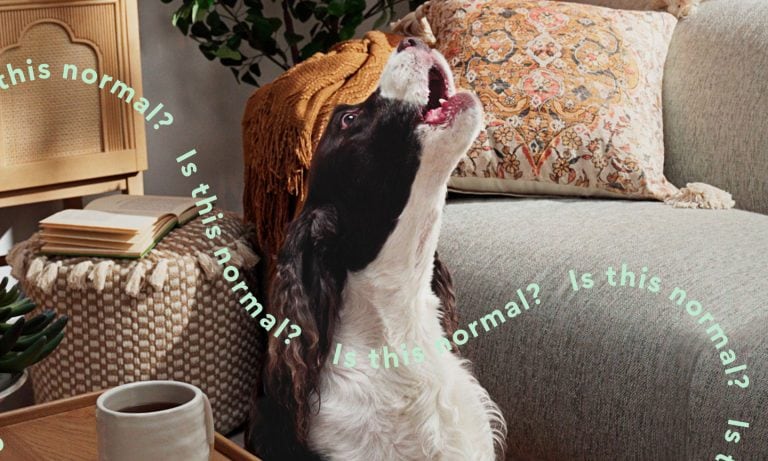Sure, you know your new dog will love you—or already does!—but will you be able to build strong bond with one another?
While love is the reason a pup snuggles up to their pet parent at the end of the day, their bond is what keeps them from taking off out the front door without a second glance.
The bond you share with a dog is a big part of why they trust you. And because bonding with your dog is built on trust, bonded dog-pet parent pairs experience less mutual frustration (yes, your dog can be justifiably frustrated with you!), get better training results, and are a joy to be around.
A strong bond is your ticket to stress-free adventures together. So, if you want a better relationship with your new dog, try these dog bonding tips to get going.
Factors That Affect Dog Bonding
It’s not always easy to bond with a dog as several factors can impact the bond-building process:
- Your dog’s age: Older dogs might have established preferences and habits that can be tougher to change.
- Your former training methodology: Pet parents who have used old school punitive training techniques might find that their dog is less willing to experiment during the bonding process.
- Your dog’s breed: Some breeds skew more “loner” than others and might prefer a relaxed bond.
- Your dog’s personal history: Adult rescue dogs who weren’t appropriately socialized or those who experienced neglect or trauma might be slower to warm to the bond-building process.
How to Build a Bond With Your Dog
Bonding with your dog is easier than you might think. Sometimes all it takes is a few tweaks to shift the tone of your relationship. The following bond builders will get you started!
Use positive training, and never stop practicing.
Add some unpredictability.
Most dogs crave predictability in their daily lives, particularly when it comes to mealtimes. But a little unpredictability can shake things up enough to help your dog realize that you’re always up to something fun!
A change as simple as taking a new walk route at a different time of day can be an exciting difference for a dog who’s used to traveling the same stretch of road. And instead of feeding the treats you always buy, try a new protein source or texture, like freeze-dried liver. If you always play the same games with your furry best friend, try some new games for dogs like “never-ending fetch” or “find the toy!”
Praise the good.
Learn body language.
Dogs are always communicating with us, but we’re not always keen to pick upon what they’re saying. Our dogs look to us for support, so not recognizing when they’re stressed, unhappy or nervous can chip away at your bond. Learning to read the nuances of canine body language enables us to be an advocate for our dogs and better understand when they need us to step in.
Plus, understanding what dogs are saying can minimize frustration on both ends of the leash. For example, a dog who seems to be “blowing off” a down cue might actually be indicating that they’re uncomfortable about doing it on hard cement.
Give your dog choices.
Think about your dog’s daily life; nearly every moment of their day is dictated by humans. Where they walk, what they eat, who they interact with, where they sleep… most dogs have little input in their own existence. But a life without choice can be detrimental to mental health, which is why offering your dog the opportunity to make decisions can lead to a happier, healthier dog and a stronger bond with you.
For example, rather than requiring that your dog keep pace with you during walks, allow them the chance to wander and sniff. Focus on the journey rather than the destination for a change! Ask your dog if they want to put on that holiday sweater instead of forcing it on them. If they back away when you hold it out, don’t make them wear it. If your dog is nervous meeting new people, allow them to say “no thanks” when strangers want to pet them. Giving your dog the opportunity to make choices is one of the most powerful ways to give your dog a voice, which will in turn make them appreciate you, and the bond you share, even more.
Accidental Bond Breakers
We don’t intentionally do things to disrupt our relationships with our dogs, but there are many ways we accidentally chip away at it.
Casting yourself as the “alpha” of your household and using heavy handed training techniques are sure ways to distance your dog from you. Studies have shown that using punitive training can negatively impact your bond with your dog as well as have an adverse impact your dog’s overall welfare.
Not providing enough physical and mental stimulation are sure ways to damage your relationship, as a dog left to their own devices might vent pent up energy in ways that can upset pet parents, like digging or barking. Unfortunately, many pet parents blame their dog for mischief due to understimulation, which can weaken the relationship between dog and owner.
A frequently overlooked bond-buster is not having a solid understanding of canine body language. For example, the behaviors in “dog shaming” videos aren’t proof that the dogs are feeling bad about what they were caught doing. The dogs are actually showing appeasement postures to keep the person on the other side of the camera from getting angry. Misunderstanding what a dog is saying can lead to problems ranging from increased stress, fearfulness and even biting.
Practice bond-building exercises often, and avoid bond breakers, and you and your dog will be well on your way to establishing a strong relationship and an unbreakable bond.
Read more:
Share:









